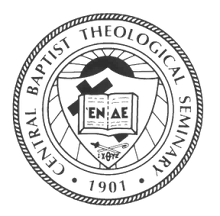Yesterday was Trinity Sunday and, surprisingly, many Baptist
churches celebrate the significance of this liturgical demarcation. Coming the week following Pentecost, this
Sunday is the church’s way of saying the fullness of the Triune God has
intersected human history. It is not
that the Spirit only showed up when the mighty wind and tongues of fire
demonstrated God’s igniting power, yet the relationship between the Risen
Christ and God’s creative presence announced the arrival of the messianic age.
As the
guest preacher at Dayspring Baptist Church in St. Louis, I experienced a
congregation invested in learning more about God’s trinitarian life with
us. From children’s sermon using St.
Patrick’s clover to illustrate oneness and threeness to the traditional East
African folksong, which praised the threefold manifestation of God, to the
hymnody featuring “Come, Join the Dance of Trinity,” the worship service proclaimed
God as Triune.
I used the
famous “Trinity of the Old Testament” icon as a portal into the richness of
divine communion, which is an open Trinity, creating space for human
participation. Written by the fifteen
century Russian Andrei Rublev, this icon recounts a tremendous encounter of
shared hospitality and good will between God and humanity.
What
catches the contemplative eye is the position of the three figures. They are arranged in a circle, inclining
toward one another, but the circle is not closed. It is as if the viewer is invited to pull up
a chair and join the intimate conversation of attentive self-giving. What the
image suggests is that the mystery of God is not self-contained but a communion
of relationship.
One of the
most interesting things about the icon, depicting the encounter of the divine
messengers with Abraham and Sarah in Genesis 18, is that the figures have both
wings and staffs. This prompts the
question: “Why would they need a staff if they could travel with
swiftness?” The history of
interpretation of this icon suggests this answer—because God desires to
accompany us in our “slow way across the earth.”
Simply put,
we cannot be fully Christian without receiving the hospitality of the Triune
God who welcomes us in Christ and abides with us as the Spirit. To speak of God as Trinity is necessary, thus,
to be faithful the story of our salvation, the birthing of the church, and the
hope that God’s reign will be fully realized.
God’s
triune hospitality is expressed through human community, which I surely
experienced at the Dayspring church.
They know how to express welcome!
It may be possible to detect the health of a congregation by how long
they linger to connect with one another after the service.
The
Christian doctrine of the Trinity—a distinctive affirmation we make among the
monotheistic faiths—recognizes a divine communion of persons who cooperative
undividedly in all their creative, redemptive, and sanctifying work toward the
world. The self-giving of the inner life
of God, its perichoresis, spills over
into all creation, and we join this holy dance of God.
Molly T. Marshall
Central prepares women and men for seeking God, shaping church, and serving humanity. To learn more, continue visiting our website.




No comments:
Post a Comment